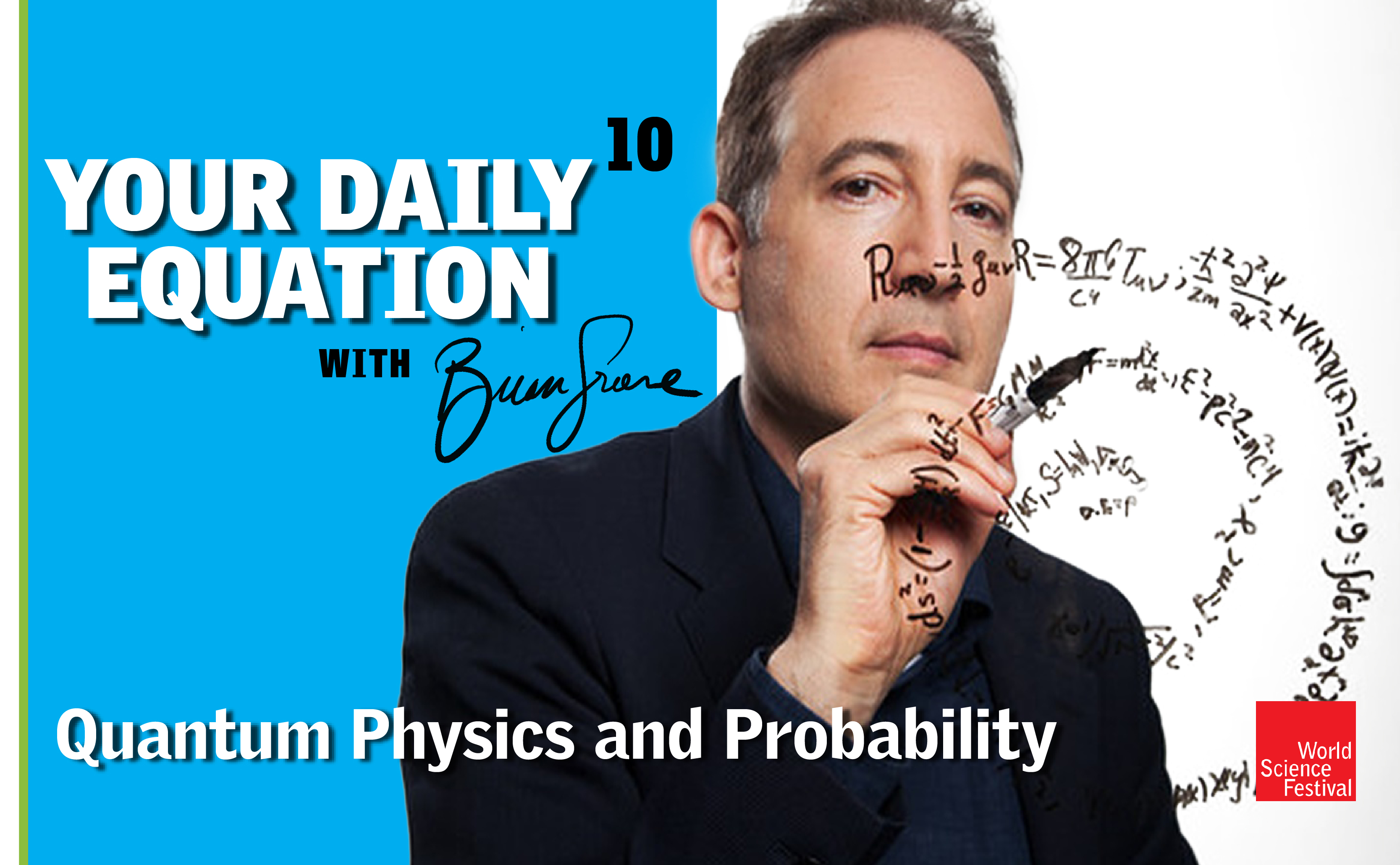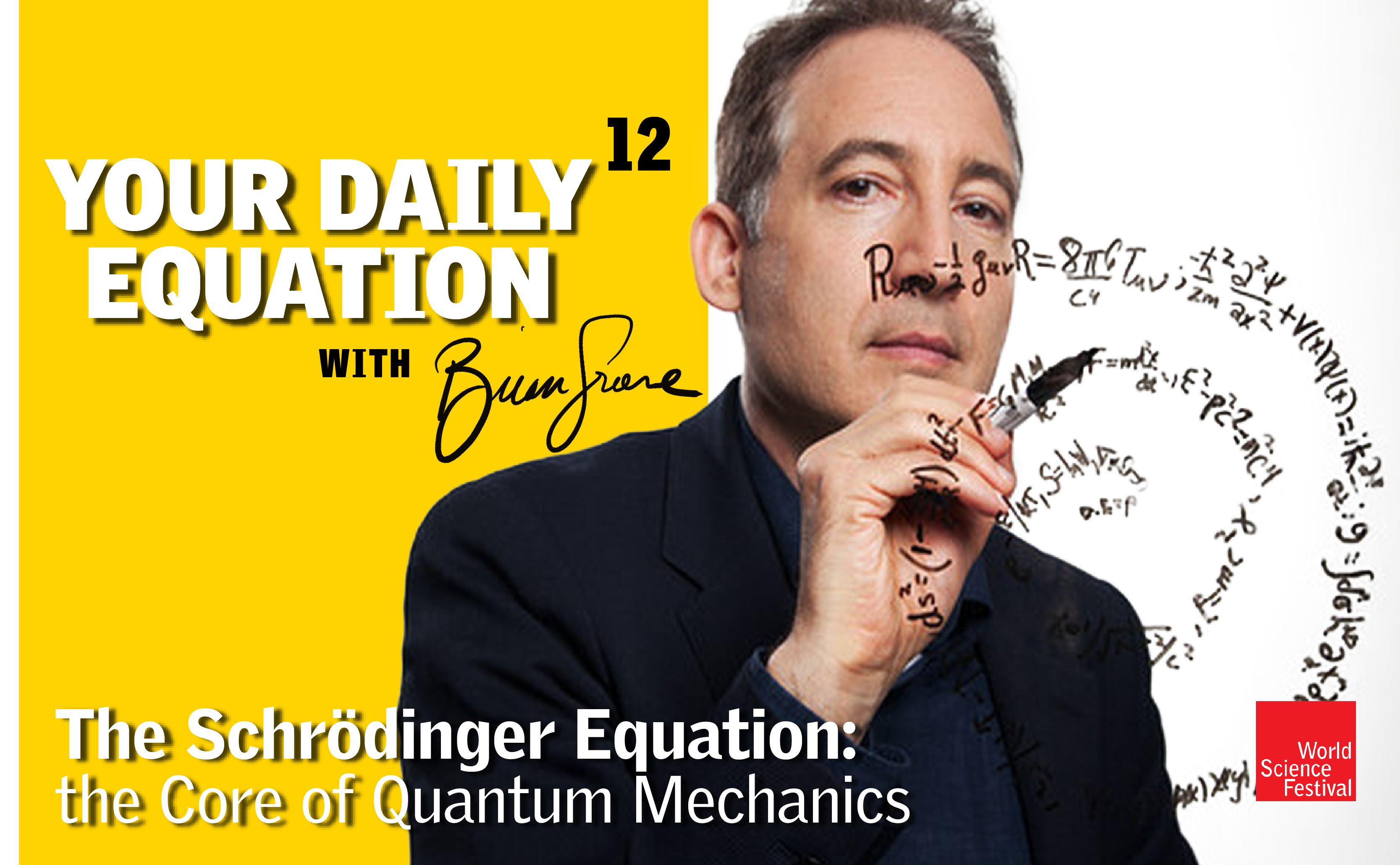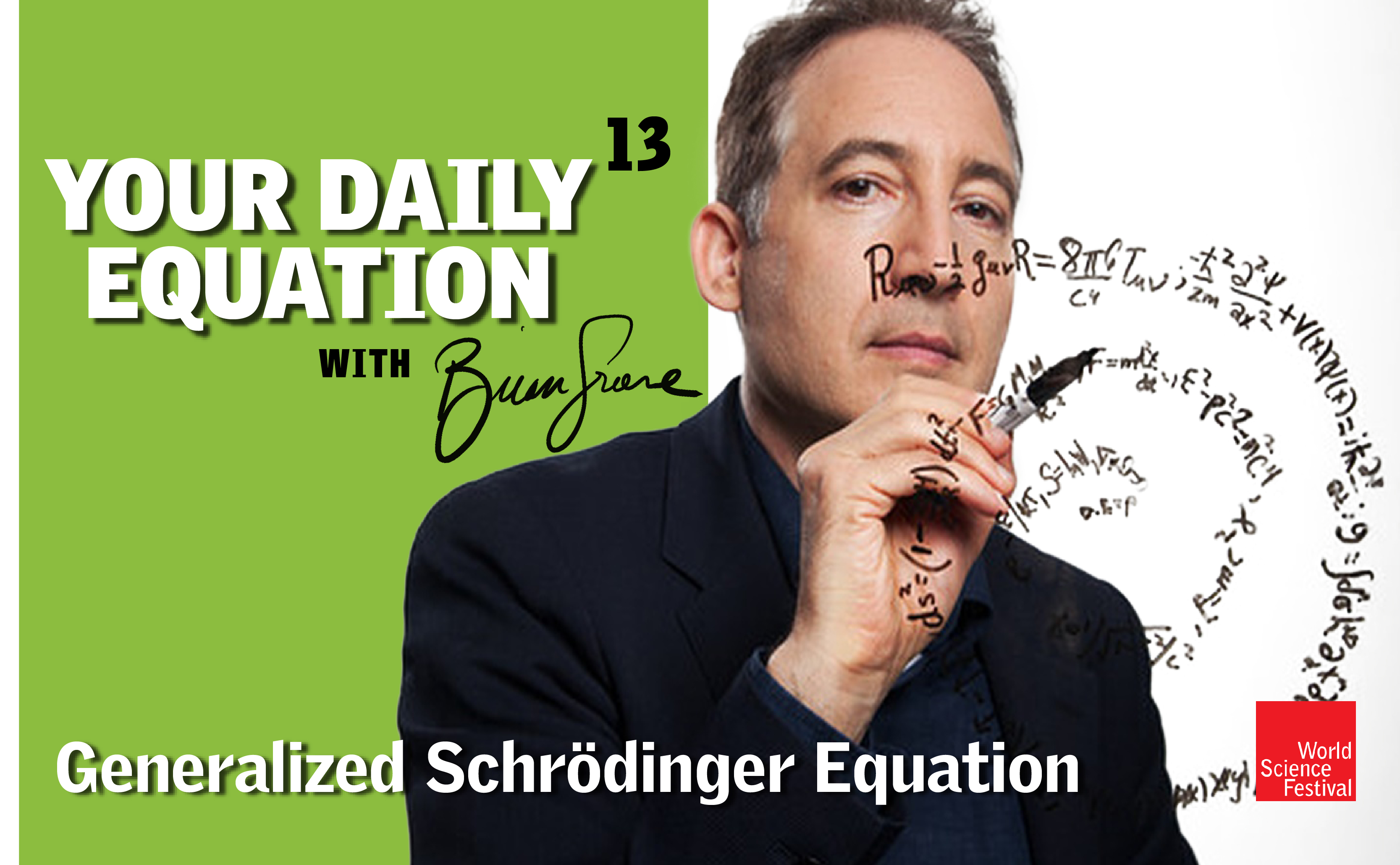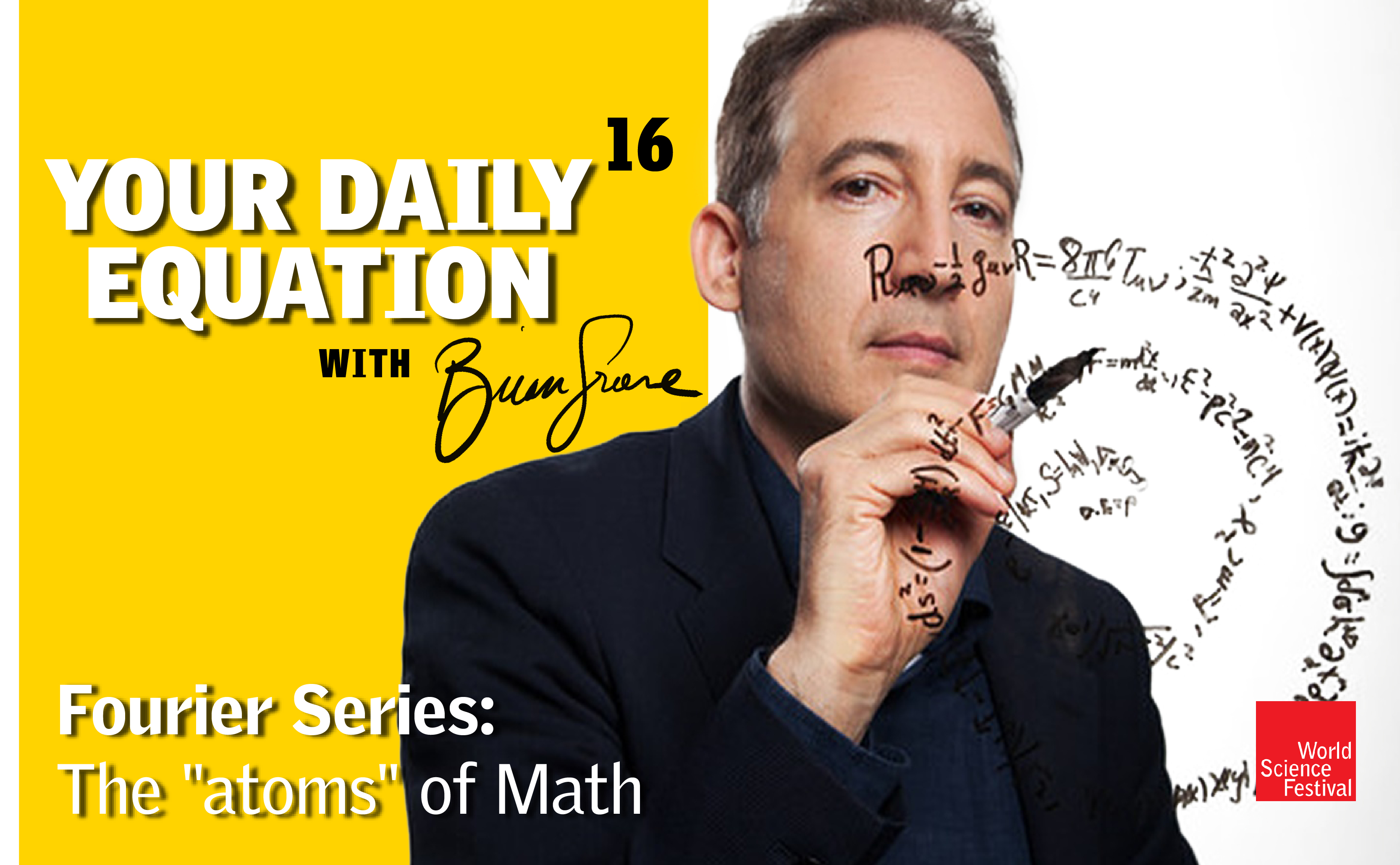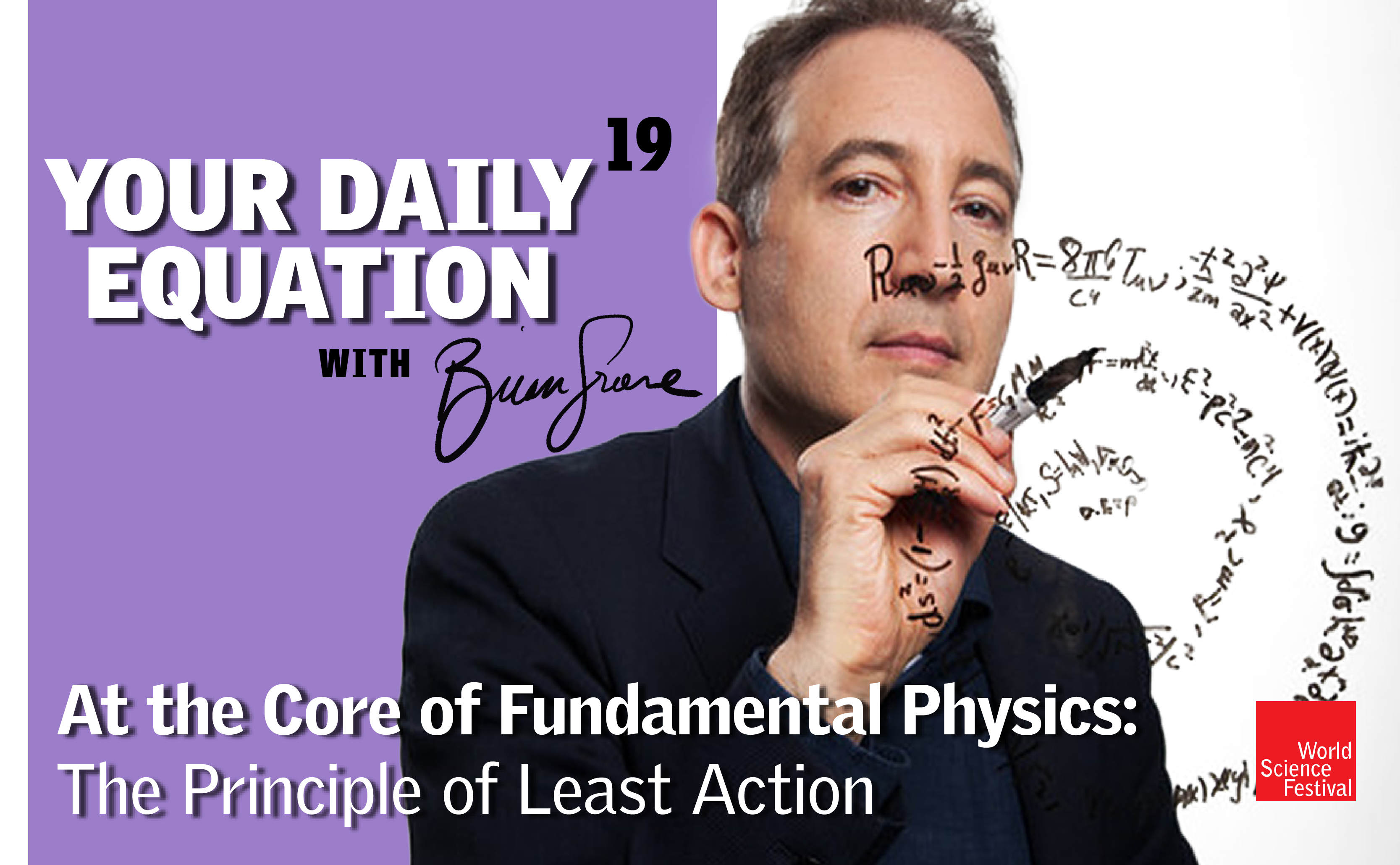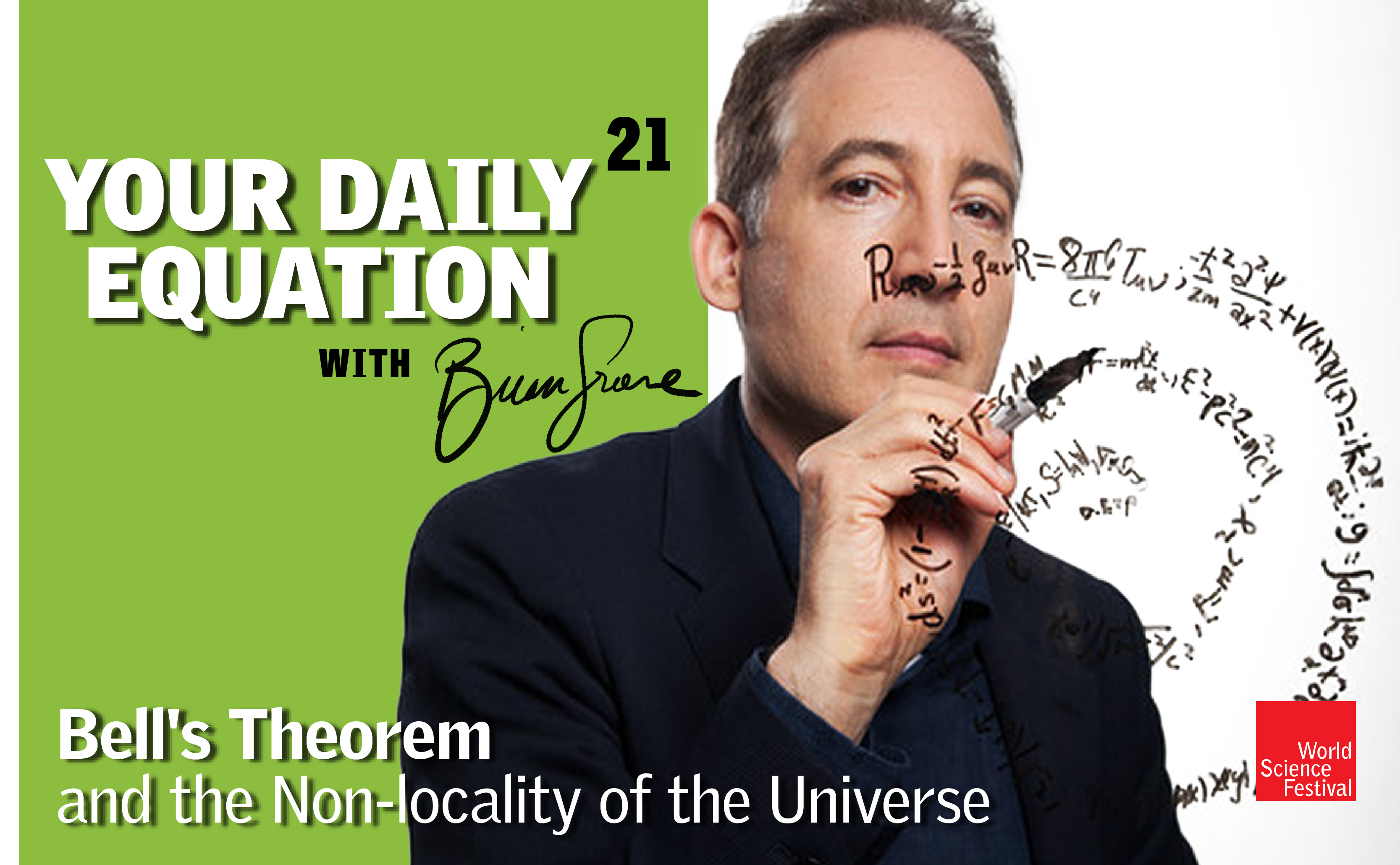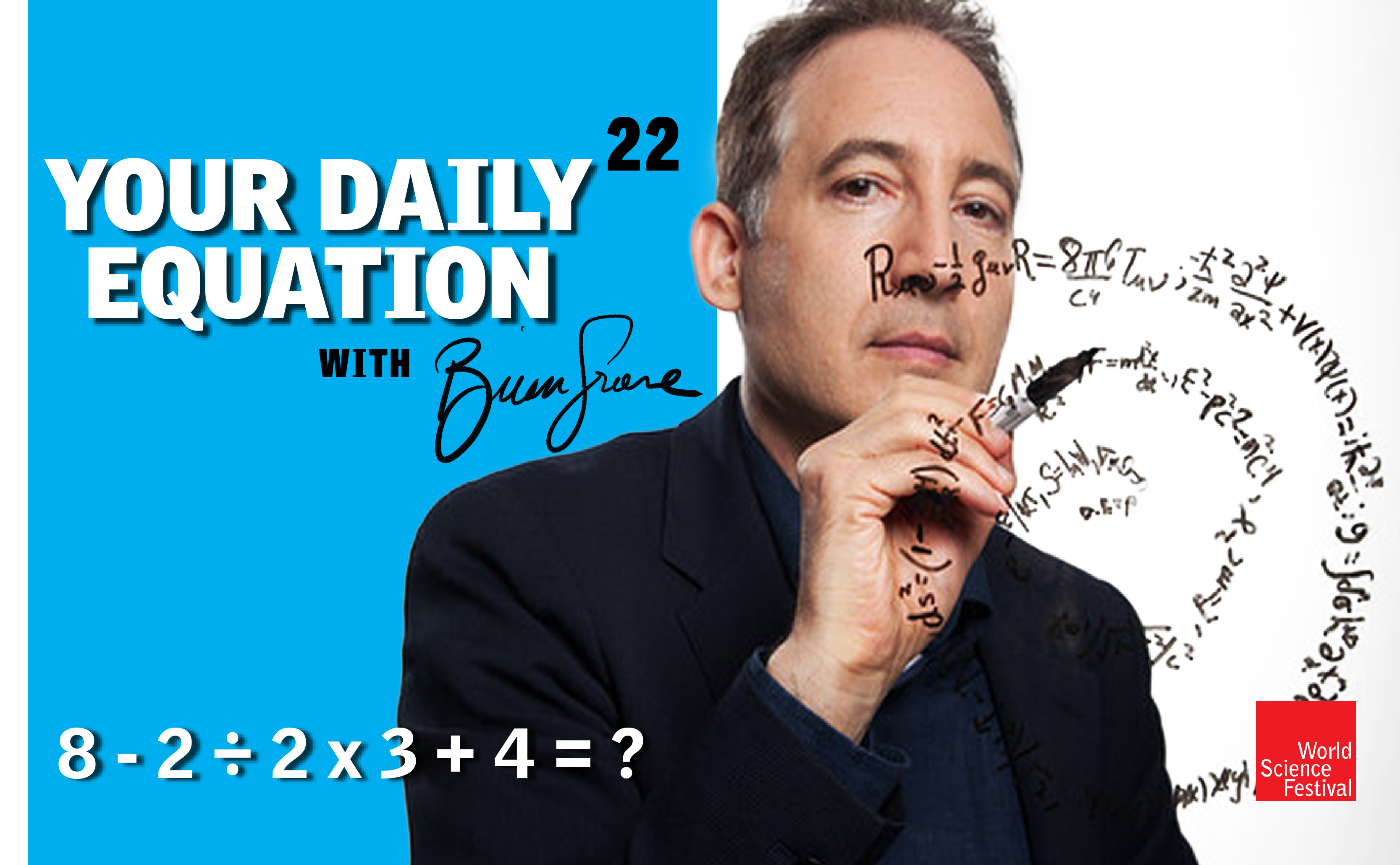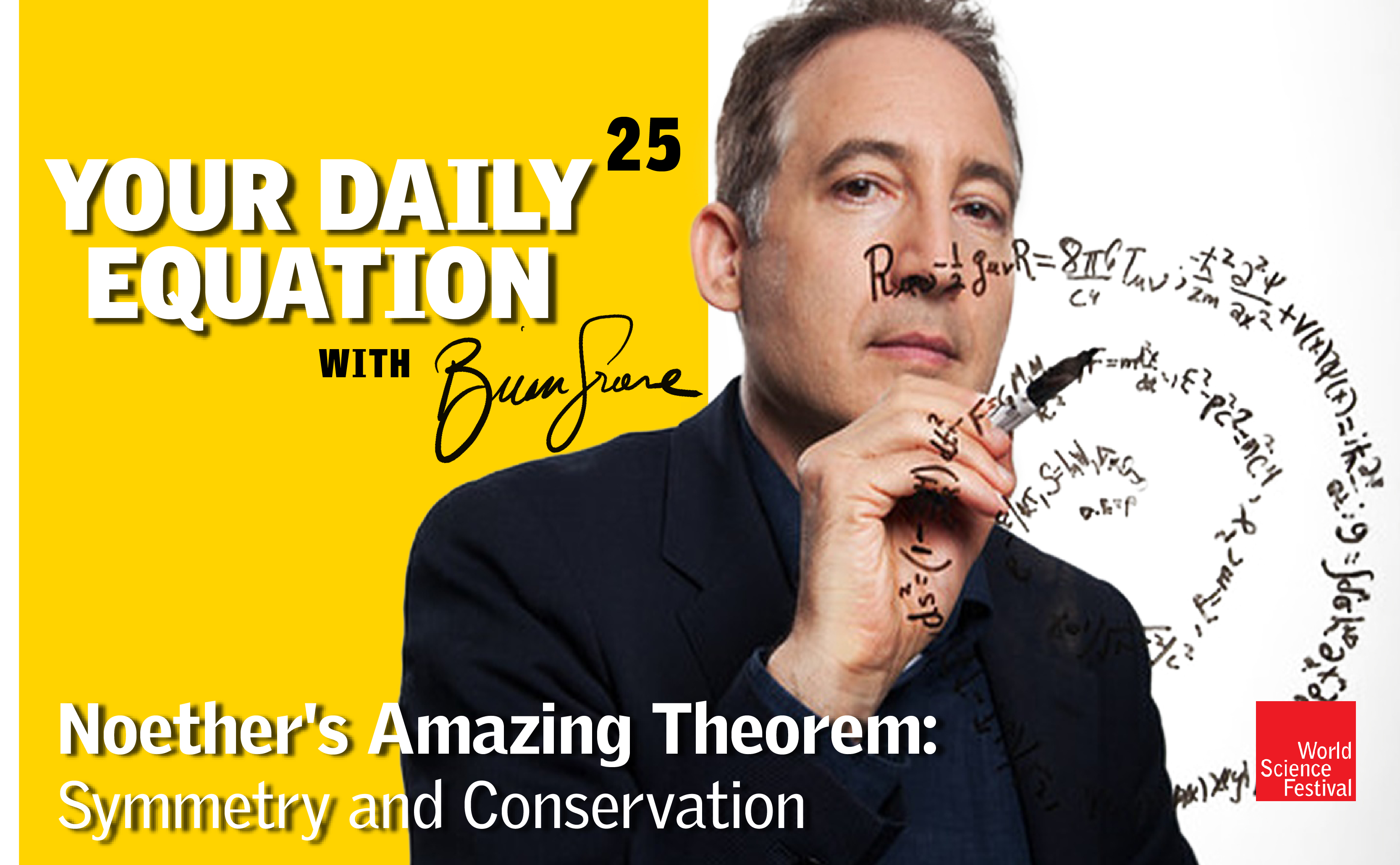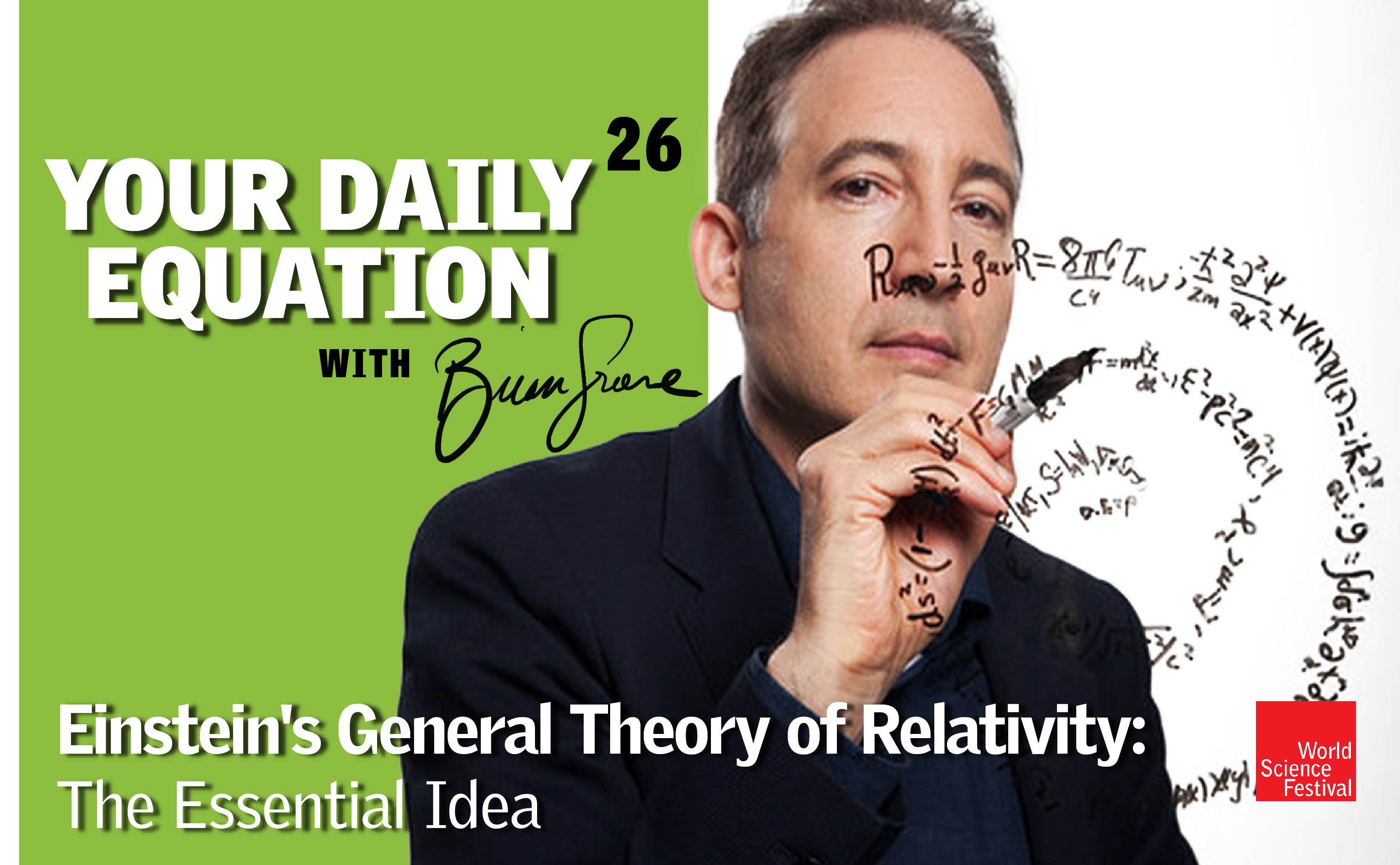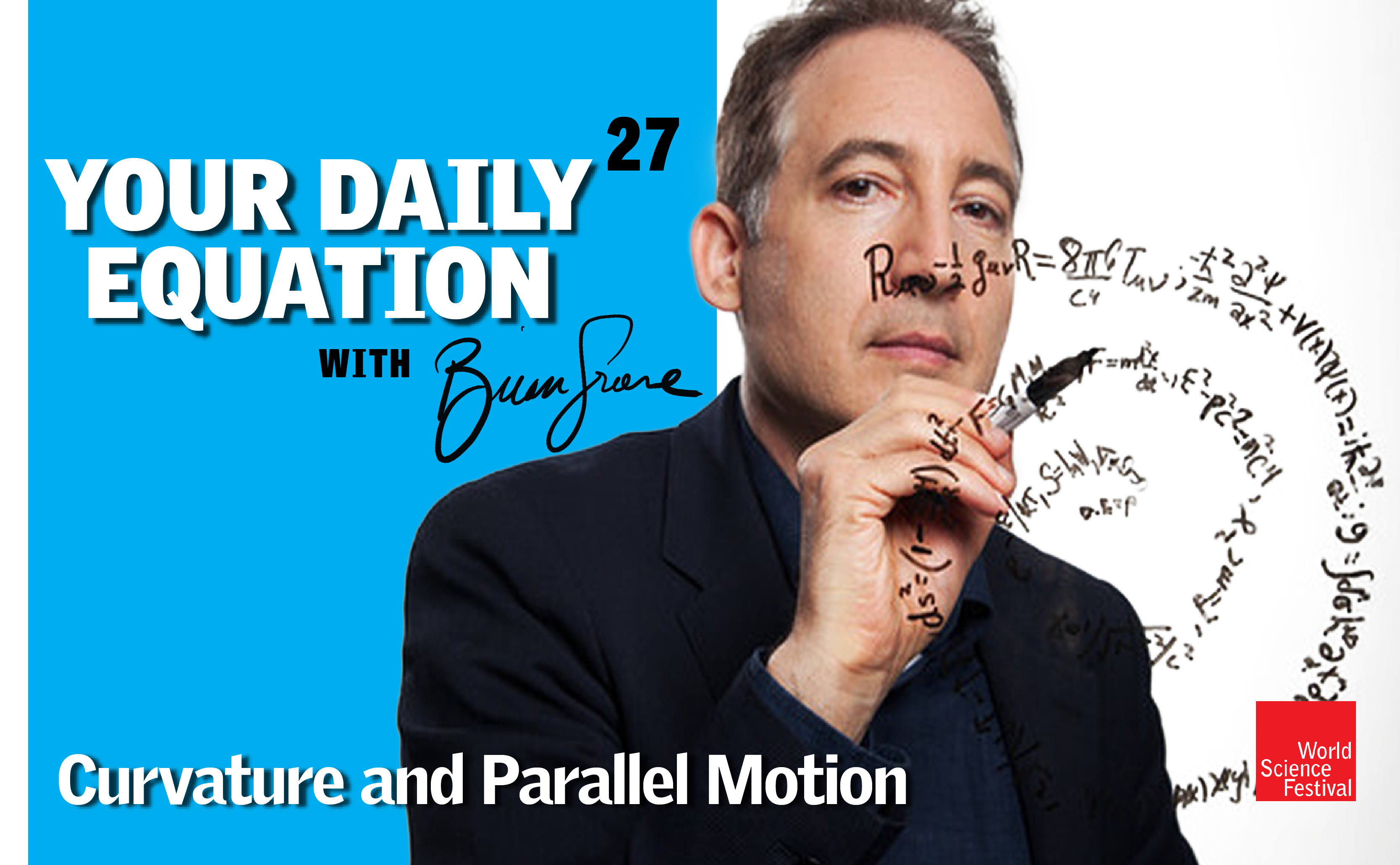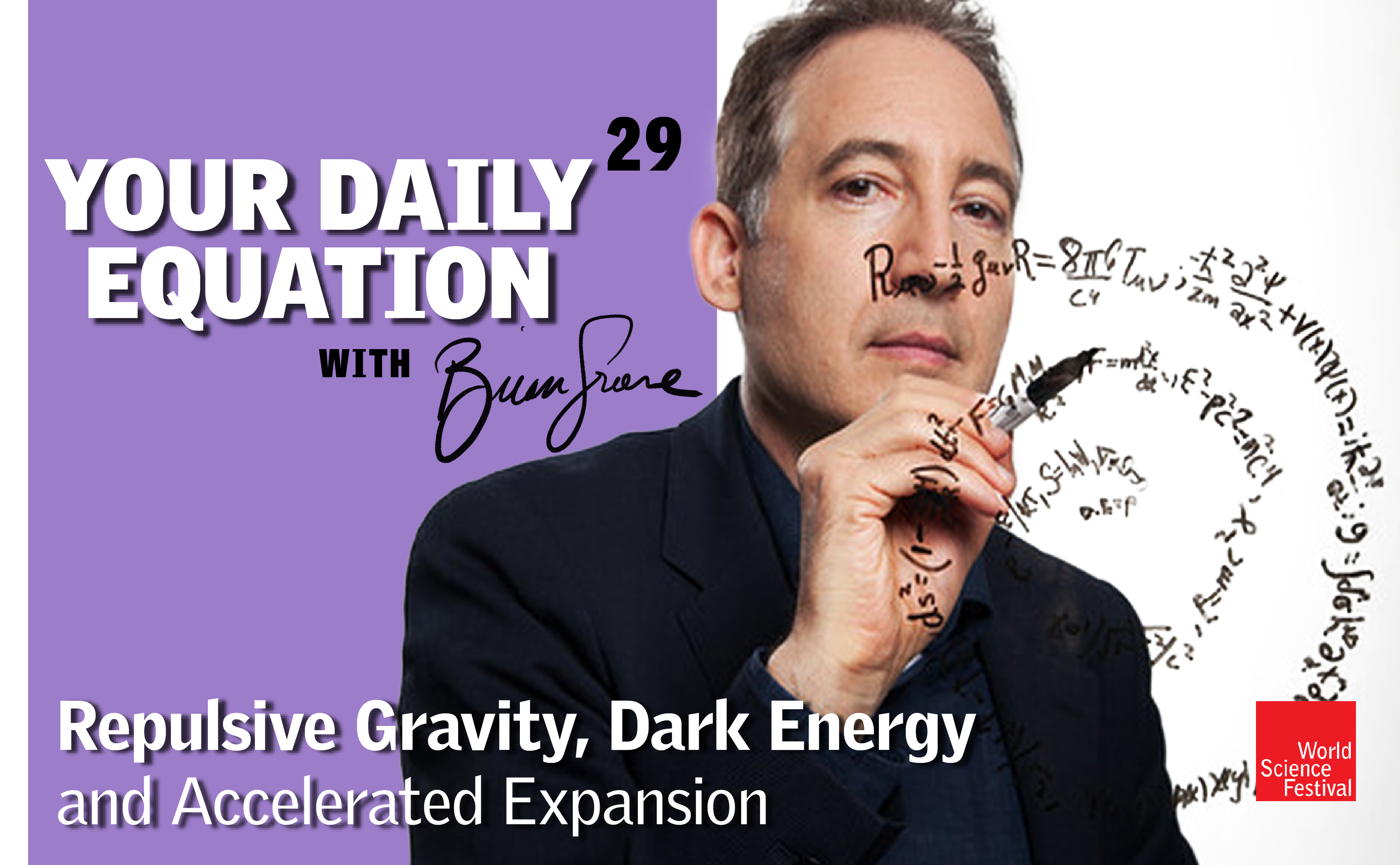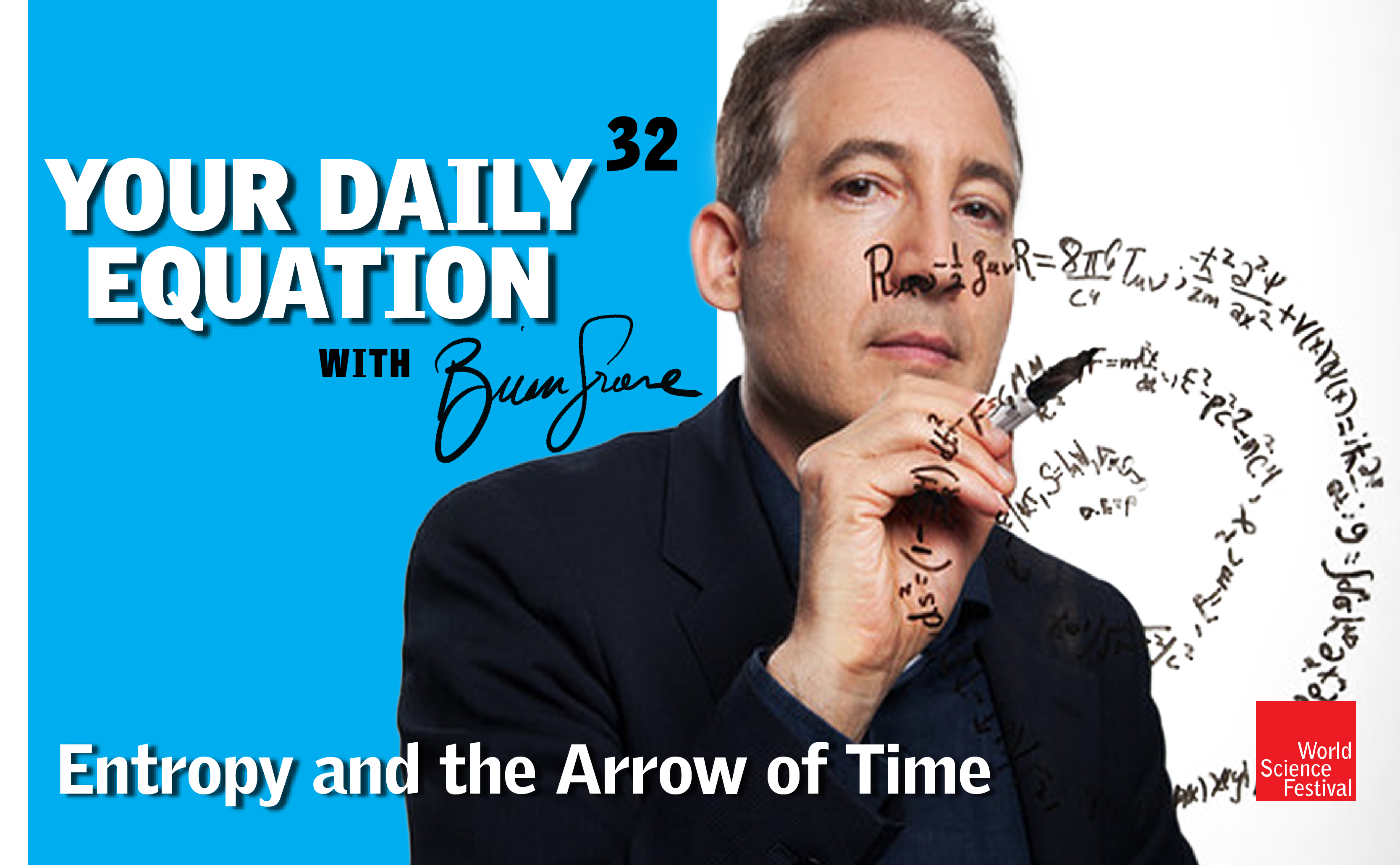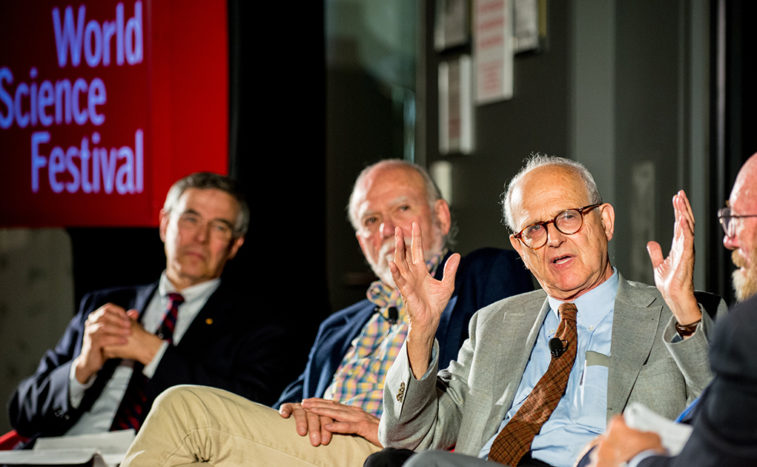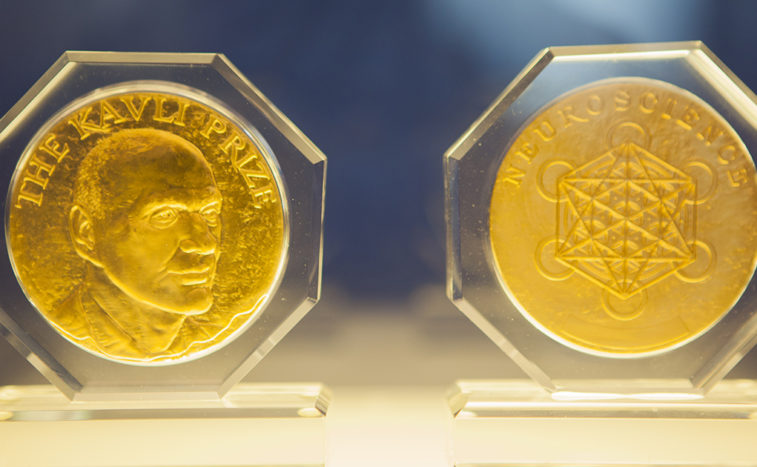1,632 views | 00:09:47
Join us for #YourDailyEquation with Brian Greene. Every Mon - Fri at 3pm EDT, Brian Greene will offer brief and breezy discussions of pivotal equations. Even if your math is a bit rusty, tune in for accessible and exciting stories of nature and numbers that will allow you to see the universe in a new way.Learn More
Speaker 1:
Hi everyone. Welcome to this next episode of Your Daily Equation. And today I’m going to focus on some very basic but very important, very pivotal insights into the workings of the physical universe that force us to cast our minds pretty far back to, say even as far back as the late 1600s because I’m going to talk about planetary motion, the very basic equations of planetary motion. And of course, that means that the star of today’s episode is none other than… Let me bring his picture up on the screen. There, you see it? Isaac Newton, right?
Isaac Newton, this towering intellect who was able to look at everything that had come before him, which were a collection of interesting insights, beginning to see patterns in data, looking at the motion of planets and so forth, and was able to encapsulate those patterns, those relationships, in some very simple basic mathematical equations that gave us really the first step into our modern understanding of the physical universe.
So these are deep and important insights, even though they don’t use a whole lot of fancy equations, a whole lot of fancy mathematics, although I should say the mathematics can get pretty complicated in its own right. Now I can’t tell you the number of times. And I understand why. I can’t tell the number of times that people say, “Okay, so who was the better physicist? Was it Isaac Newton? Was it Albert Einstein? And I think the best answer to that question is, who cares? Right? When you’re talking about intellects that can pierce the obscuring layers and see the true workings of the world in the manner that Newton did, in the manner that Einstein did, it doesn’t matter who’s better. They’re so much better. They’re so much more insightful than every other person that really has lived that… You know?
I mean, there are other great physicists, don’t get me wrong. But the ordinary physicist, the mere mortal physicist is so less powerful, so less able, to do the kinds of things that an Einstein or a Newton did that we just stand in awe of their greatness, regardless of whether it’s Newton or Einstein. These are the kinds of intellects that come along, whatever, once a century. And to my mind, I just take sort of a great, great thrill, great pleasure, in the fact that every so often molecules can come together into a brain and yield the insights that a Newtonian brain or an Einsteinian brain can give us. And that to me is what makes it all thrilling. I don’t need to rank them as one or two, or who’s better, or who’s second place so to speak. So anyway, let’s get into the subject then. And the subject is planetary motion. And just so that we’re, say, all on the same page, let me just give you a little visualization to have in mind.
So we have a planet like the earth. It’s in orbit or at a star. Think of it as our sun. And the goal is to understand, with mathematical precision, the motion of the earth or the other planet, Saturn, Jupiter, whatever. We want to write down equations that allow us to predict where the planets will be at any given moment. And that’s what Newton does for us. Okay. So let’s get into the subject. I have to write down some ideas and equations. I need my Apple pencil to do that, which I do… Oh, it’s over there. Sorry. Hang on one second. Obviously I should have set things up better from the get go, but that’s how it goes.
All right. So let me bring my iPad up on the screen. Good. All right. So the subject then is planetary orbits, or really planetary motion, more generally. And it comes from basic laws of motion that Newton provided us. And how then does that go? So, as in the animation, say we have the sun in space and we have the earth, say, some other location. And let’s say that the distance between them is R. And what Newton tells us is that the force of gravity, and obviously it’s one of the most famous equations, maybe it is the second most famous equation to Einstein’s E=mc2. I don’t think that ranks Newton versus Einstein. That’s public relations as opposed to pure intellect.
But the force of gravity that Newton tells us is if the earth has mass little M, and say the sun has mass big M, then you take big M, and I will not color code everything, it will take me too long, times little M… Oh, I love putting all these colors in. I’ll do it… times G. And you have to divide this whole lot through by R squared. So this is the magnitude of the force of attraction between the earth and the sun, goes as the product of the masses divided by the square of their separation, and it is an attractive force. I could write this as vectors. But let me just say, as we all know, that the force of gravity in this guise pulls the sun toward the earth, the earth toward the sun. So it acts along the radial direction, drawing the two objects together. Okay, so what do we do with that?
Well, we now make use of the famous second law of Newton, which says that F=MA, and again, one of the equations that we teach to high school kids around the world right now. And F=MA is a very simple looking formula, I should say F is the force, M is the mass, A’s the acceleration. But I could teach a whole semester on F=MA. There’s a lot hidden behind the scenes in F=MA. Right? Because,e I mean, what’s here? What really do you mean by the mass of an object? What really do you mean by the force on an object? Acceleration? Well, we talk about that as the rate of change of velocity, if you let me just put down a little calculus for the heck of it. So acceleration, just magnitude, comes from the rate of change of velocity.
Velocity is a vector in circular motion. So maybe I really should put that down of that sort. And velocity itself comes from a similar expression, rate of change, say, of position. But immediately you see that, to even talk about these ideas, we need to commit to some understanding of time. We need to commit to some understanding of space. That’s what the X is representing. And right there, there’s deep issues. What do we mean by space? What do we mean by time? Now, Newton took the perspective of, “Hey. These are ideas that are so intuitive and they’re so clearly the basis of the reality that we experience,” that he basically just said, “You know, space is the arena within which things happen. Period. End of story.” He said, “Time is this quality that inexorably advances moment after moment in a manner that’s the same for everyone, regardless of where you are, what you’re doing, what you’re experiencing.”
And so he kind of anchored this law of motion, F=MA, in an intuitive understanding of what we mean by space and time. And of course, when Einstein then came along later on, he was able to go further and say, “Hey, the intuition that we have about space and time is not actually correct. It works at slow speeds. It doesn’t work at high speeds.” And therefore you see that the subtleties that we immediately can identify within even the simple Newton’s second law, these are important subtleties because thinking them through clearly yields a new revolution, The revolution of special relativity, which we have covered in some previous episodes. So it’s just to say, when you see a formula like F=MA, there’s a lot behind that formula. I’m not going to get into any further of those details now, but maybe in one of these episodes I’ll actually take F=MA and really pull it apart, and we’ll think about all the assumptions and all the qualities of the world that go into that.
But for now we’re just going to, of course, make use of it. So, if we now imagine… And this is the simplest case that we will study. And at the end of this episode, I’ll generalize it a bit. But if we imagine, say, that the earth… woops. Let’s draw that like this. It’s so hard to draw free form. So imagine that the earth is going in circular motion. We all know that that’s not quite right. It’s elliptical motion. I will come back to that toward the end. But to be simple right now, imagine that the earth is traveling in a circle with the sun at the center. Then how do we make use of these equations to work out the formula, say, for the velocity of the earth around the sun? Well, we make use of the following fact. If you have circular motion, then the acceleration is not coming from a change in the speed of the object.
Circular motion, we’re going to imagine it’s at fixed speed. But what does change, of course, is here is… Oh, that’s kind of sloppy. Let me see if I can do a little bit better than that with a different color. So let’s use some hot pink here. So this location, I’m overdoing it, but you can see that there is the instantaneous velocity vector of the earth at some other location. It will then be tangent to the circle at that location. And you see that V1 and V2, they have the same magnitude but a different direction. And so it’s the change in direction. Remember, velocity is something that has both a magnitude and a direction. It’s the change of direction in circular motion that gives rise to the acceleration. And if you’re careful about looking at the change in the velocity vector as, say, the increment of time gets smaller and smaller, so that this second vector gets closer and closer to the first, you can convince yourself.
It’s actually just a little bit of playing with these vector. You can convince yourself that the acceleration is always radially inward toward the center of the circle. And indeed, if you’re careful about it, the magnitude of that acceleration is equal to V² divided by the radius. And that’s really not hard to establish. I’m not going to take the time to do it here. You can do it in the manner that I indicated. But now, we’re cooking with gas because with the equations that I have boxed over up on your screen, we can now find a formula for the magnitude of the velocity where we just are going to set the force, namely G-M-M, mass of the sun, mass of the earth, the distance between them R squared, that’s equal to M times A. But for A, we will now put V squared divided by R. And that’s nice because the Ms cancel out, which effectively always happens in gravitational problems. And that is actually a deep insight that you need general relativity to fully appreciate.
But now, we’re just going to use it as a mathematical fact that we have here. So that gives us V squared equals GM, multiply three by the R, it kills one in the bottom, GM over R. And we have V for circular motion. Maybe we’ll put a C on it for circular motion is equal to the square root of GM divided by R. So there is a simple and elegant little formula that allows us given, say, the mass of the object, say the sun in this case over here, given Newton’s constant G, given the distance between say the earth and the sun, we now know the speed that the sun… that the earth, I should say, would have if it’s moving in a circle around the sun. Now there’s something else that that’s really cool that immediately pops out of this. So let me now use that in the following way.
If I consider, say, the period that it takes, T, the time for it takes the earth to go in one full orbit around the sun, well that will be distance two PI R divided by the velocity VC. And I’m going to drop all the constants now because I’m just really trying to get at a proportionality, as we’ll see in a second. So let me just write this as proportional to R over VC. And that’s proportional to the VC. The only thing of interest in there for us is the R dependence. And it goes like the square root of one divided by R, leaving out all of the fancy constants because I just want the proportionality. And that is proportional. The square root of one of our R brings us a square root of R upstairs, R to the three halves power. And that implies… Now this is worthy of a change in color, make it even darker, that the periods squared is proportional to the radius of the orbit cubed.
And you may be familiar with this relationship because this is one of Kepler’s laws of motion. Let me bring Kepler up on the screen here. So there is Johannes Kepler. And what Kepler did was… And this is totally amazing. Kepler’s before Newton. And what Kepler does is he looks at the data that was gathered by Tycho Brahe, I believe it was, and he just immerses himself in the data, careful measurements of planetary motions, planetary distances and so forth, and notices. I mean, you have to play with these numbers. He notices… bring it back up on the screen here. He notices that if you take the square of the period for the orbit, the orbit time of a planet, and you take the cube of its distance from the sun, that there is this relationship that seems to be apparent in the data.
He doesn’t know why this would be the correct relationship between the period of the orbit and the distance of the orbit. But he notices it as a fact, which is amazing in its own right. And then Newton comes along. And with these very simple equations that we have over here, he is able to derive this relationship. That’s thrilling, right? There’s this unexpected pattern in the data, square of the period goes like the cube of the radius of the orbit. And then Newton, using these simple ideas, is able to derive that. So that’s really quite beautiful there. So, so far where we’ve gotten then is if we have… Let’s go back to my picture over here. So if we have the sun over here and we have, say, the planet, the earthm over here, if we were launching the earth into orbit and we wanted it to travel in a circular orbit, we know that we would have to launch it with a tangential speed being given by the square root of G, mass of the sun, divided by R.
And if we did that, then the earth would go into circular orbit. But a natural question is, what if we don’t launch it with precisely that speed squared of GM over R? What would happen? And let me finish up our discussion here today by discussing a number of possibilities of what could happen for the planetary motion. And to do that, it’s useful for me to derive one other very important speed, which is called the escape speed, escape velocity more precisely. And what is that? Well, how much speed would I need to give to the earth to ensure that it actually doesn’t go into orbit at all, that it actually escapes all the way to infinity, that the sun can never pull it back? And again, this could be a Your Daily Equation in its own right. This is kind of bonus material, if you will, for today’s daily equation. But it seems fitting to try to include it in this episode.
So how would you work out the escape velocity? And the simplest way to do that is to make use of the following facts. So when we’re talking about the energy, say, of the earth or any object, a rock that’s in motion in the vicinity of a source of gravity like the sun, how would we write down that energy? Well, we’d write that energy in terms of kinetic energy, the energy of motion, plus potential energy, which is the energy again that some object has by virtue of it being near a source of gravity. Right? As I put the Apple pencil higher and higher, it has more and more potential energy. It will drop and it will achieve ever greater kinetic energy as potential energy is transformed into kinetic energy. Now for kinetic energy, we know the formula, or I hope that you’ve seen the formula. If this is your first introduction to this series, you can go back and see earlier episodes where I’ve discussed this, but if not, you can just look it up.
So kinetic energy goes as one half M V squared. But what about potential energy? What is the potential energy associated with the force of gravity? And that is not completely obvious. Again, that is something that might be worthy of an episode in its own right. But I’m just going to write down the answer, which is minus G M M divided by R. And this is known as the Newtonian gravitational potential as a function of the distance R. And some of you will note that if I take the derivative or negative the derivative of this potential with respect to R, I will get the force of gravity that Newton wrote down. So that is the relationship between so-called conservative forces, forces that don’t lose energy to friction, the relationship between the potential energy function and the force itself. But again, in all of these episodes, it’s hard to know where to stop in the explanations because you can go sort of all the way back to the ancient Greeks if you follow the trail of what depends on what.
So I hope you’re okay with me just writing this down at this stage in the discussion today. And how do we make use of this formula? Well, when we talk about escape velocity, what we really mean is the earth, say, will escape the pull of the sun. And when it reaches infinity, it will have exhausted all of the kinetic energy that we pumped into it in order to kick it out of orbit. Now if it has zero speed at infinity, and that infinity, of course R, is large, so this number here will also go to zero as R goes to infinity. And if this guy goes to zero because the velocity is going to zero at infinity… Let me just erase this. It’s going to be messy. What we’re saying is to get the escape velocity, we just set the left hand side equal to zero, because we want, at infinity, for the earth or whatever object is escaping the sun to have zero energy.
It can have zero energy, of course, because this gravitational energy is negative the way that we have set things up. Again, itself an interesting idea worthy of its own Daily Equation too. But I’m not going to follow that subtlety any further than simply mentioning it. Okay. So with this equation here, we can now write down that one half M V squared equals G M M divided by R. Again, the Ms go away. The two goes over. So we get V squared equals two G M divided by R. In other words, the escape velocity, let’s call it V E, is the square root of two GM over R. So that’s kind of interesting because, to put the earth in a circular orbit, we needed to give it a speed square root of GM over R if you have this one over here. So for circular motion, square root of GM over R. And for escape it’s the square root of two that gets added in or multiplied into the formula. So the escape velocity is the square root of two GM over R. So now we have two interesting speeds, VC and VE. And I’m now going to ask myself the following question.
So if I have the sun and I have the earth over here, I want to think about the trajectories that the earth will follow if I give it a speed, for instance, that is less than the circular possibility, V equal to the circular number, square root of GM over R, we know what happens there. It will just go into orbit. Then I want to consider what happens if I give it a little bit more than… So this case over here, I should say, obviously, I’m giving it less than the circular. Here I’m giving it equal to the speed required to go into a circular orbit. What happens if I give it a speed V, say, that’s greater than the speed required to go in a circle, but, say, less than the escape velocity? Right? And then I can consider a V equal to the escape velocity. We know what will happen there. But I’m going to give a little bit more detail.
And finally, what if I give it a speed V greater than the escape velocity. So in other words, I’ve got five possibilities here that are worthy of thinking about one, two, three, four, and five. And I’m not going to do them in that particular order. Rather, let me start, and I’m going to do this visually for you over here. So let me start by giving the speed equal to that required for the earth to go into a circular orbit. And there we see it. The earth goes into a circular orbit. Fine. If I now give it speed that’s equal to the escape velocity, we see that the earth is escaping. But here’s the thing, what’s the shape of the trajectory that the earth follows? And the answer is, turns out you can work out the mathematical equations based on what I’ve given you already. It’s a little more involved. But the earth will follow a parabolic shape out to infinity.
And if I go the other direction, it fills in, as you see, the other side of the parabola. Good. So that’s the case of V equal to VC and V equal to VE. What if I give it a speed less than that required to put it into a circle? Well, as you see here, what happens is it goes into an elliptical orbit. And the sun is actually at one of the foci of the ellipse. It’s at their right most of the two foci of the ellipse. That’s what happens in that particular case. Now, what happens if I look at a speed that’s between the speed required to have a circular orbit and the speed required to escape the pole of the earth? Boom, there we see it. The earth also goes into an elliptical orbit, a larger ellipse, where now the sun is at the left most foci of the two foci for that ellipse.
And finally, we already did V equal to V escape. What if his V is greater than the escape velocity? And we see, of course, it still escapes. But now, the shape is a little bit different. The shape is a hyperbole. And so what happens is you have four possible shapes for the trajectory of, say, a planet like the earth that will be determined by the initial speed, the initial velocity, that we give it. It can be circular, which is the simplest one that we worked out the equations for. It can be parabolic when the speed is equal to the escape velocity. There are two ways in which you get an ellipse. And two is kind of under counting because for any speed less than VC, or for any speed between VC and VE, you get elliptical orbits, which means ellipses are easier to get than circles. For a circle, you need one very specific speed, square the GM over R.
For an ellipse, if you have any speed less than VC, or between VC and VE, you get an ellipse. And that’s why the planets are in elliptical orbits. Nobody was there exactly precisely fitting them to have the speed required to go into a circuit orbit. Now, there are other subtleties, of course. When you have a planet orbiting, say, the sun, they’re actually both orbiting their center of mass. And so… but the planets are very light compared to the sun. So I’m certainly suppressing certain details. But this is the basic idea. And if you have V greater than the escape velocity goes in this hyperbolic trajectory. Oh. And I should show you the other side of the hyperbola. Boom, now it’s going up the other side as well. Now, why these four particular shapes? Again, I’d love to do an episode on that, but these are all known as conic sections.
What does that mean? This will be the final thing that I’ll talk about today. And it’s just schematically noted. So if I take a cone, right, something say that looks like this… And let me just give it a little bit of a shape like that. And if I was to take this cone and slice it with planes at different angles, the intersection of the plane with the cone would give me different shapes. Right? So if I cut it with a plane that just goes sort of right across like this, that’s the easiest one to picture, this guy over here. This one will just me a circular cross section of the cone as I’ve drawn it. But now if I cut it at an angle, if I tilt it a little bit, I’ll get an ellipse. If I tilt it more, I can get a parabella.
I tilt it even further, I get a hyperbole. So the four conic sections, an idea just from geometry, give the four possible trajectories of a planet that’s being acted upon by Newtonian gravity, which is a gravitational force that drops off like the square of the separation. So it really all comes down to the formula that I wrote here earlier that the force goes like one over R squared. Now finish up with, why is it one over R squared? Well, the best way of thinking about it intuitively is I think the one that most of you probably encountered in high school. If you have a body like the sun, it’s basically… You can think about it sending off, roughly speaking, these lines of force. Right? Now, these lines of force pierce… I’m only drawing them in a plane because that’s all I can do here. But in reality, right, they are piercing a three dimensional…
They’re going through three dimensional space, so they are piercing a two dimensional sphere, not a one dimensional circle, as I’ve drawn. These are piercing a one dimensional circle. But in a three dimensional spatial case, they are piercing a two dimensional sphere that surrounds the sun. And the area of a sphere goes as we know… The area of a sphere in three dimensional space goes like… Well, it’s four Pi R squared, which means that the density of the lines piercing that sphere drop like one over R squared. The density of the lines drops like one over R squared. And the density of the lines determines the strength of the force of gravity. So why does it go like a square here? Because we live in a three spatial dimensional world, or at least three big spatial dimensions are the ones that we are imagining this gravitational force is permeating.
So look at all the ideas that come into this, the number of dimensions of space. The inverse square law comes from that. The relationships between force, mass, and acceleration that bring in themselves ideas about space and time that ultimately coalesce to give us this cool formula here, the formula for the speed required for circular motion. We can from that get Kepler’s law, the square of periods goes like cubes of the radius. We get the escape velocity from it as well. And finally, we have the five cases which give us the four shapes of trajectories, the ellipses, the circle, parabolic, and the hyperbolic. So it’s a deep and, as you see, beautiful subject. I’ve just sort of only skimmed the surface of it. But that gives you the basic idea of the underlying equations that allow us to understand the motion of the planets. Okay. That’s all I wanted to talk about today. Take care until next time. This has been your Daily Equation.
Join us for #YourDailyEquation with Brian Greene. Every Mon - Fri at 3pm EDT, Brian Greene will offer brief and breezy discussions of pivotal equations. Even if your math is a bit rusty, tune in for accessible and exciting stories of nature and numbers that will allow you to see the universe in a new way.Learn More
Brian Greene is a professor of physics and mathematics at Columbia University, and is recognized for a number of groundbreaking discoveries in his field of superstring theory. His books, The Elegant Universe, The Fabric of the Cosmos, and The Hidden Reality, have collectively spent 65 weeks on The New York Times bestseller list.
Read More© 2008-2023 World Science Foundation. All Rights Reserved.
World Science Festival ® and its related logo are registered trademarks of the World Science Foundation. All Rights Reserved.










